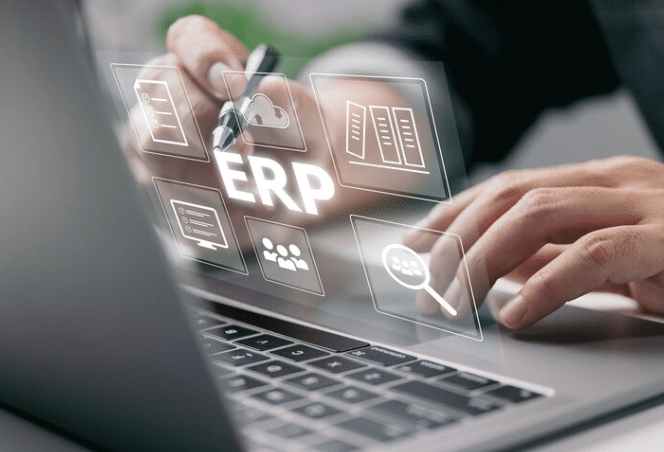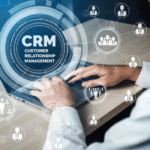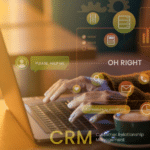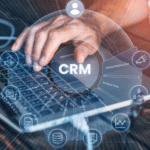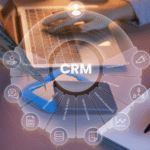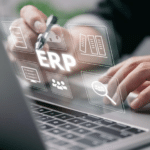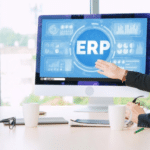Introduction
As businesses continue to navigate the complexities of the digital age, Enterprise Resource Planning (ERP) systems are evolving to meet new demands. In 2024, ERP solutions are poised to integrate cutting-edge technologies, offering unprecedented capabilities and transforming how organizations operate. This article delves into the emerging trends and technologies shaping the future of ERP in 2024, providing insights into how these advancements can drive efficiency, innovation, and growth.
1. Artificial Intelligence and Machine Learning Integration
Enhanced Decision-Making
Artificial Intelligence (AI) and Machine Learning (ML) are becoming integral components of modern ERP systems. These technologies enable ERP solutions to analyze vast amounts of data, providing actionable insights and enhancing decision-making processes. AI-powered analytics can predict trends, optimize operations, and identify potential issues before they escalate.
Automation and Efficiency
AI and ML automate routine tasks, such as data entry, invoice processing, and inventory management. This automation not only increases efficiency but also reduces the likelihood of human error, allowing employees to focus on more strategic activities.
2. Cloud-Based ERP Solutions
Scalability and Flexibility
Cloud-based ERP solutions continue to gain traction due to their scalability and flexibility. Businesses can easily scale their ERP systems to accommodate growth, whether it’s adding new users, expanding to new locations, or integrating additional functionalities. Cloud ERP offers the flexibility to adapt to changing business needs without the need for significant capital investment.
Cost-Effectiveness
The subscription-based model of cloud ERP reduces the need for large upfront investments in hardware and software. This cost-effective approach makes ERP solutions more accessible to small and medium-sized enterprises (SMEs), allowing them to leverage the same advanced technologies as larger corporations.
3. Advanced Data Analytics
Real-Time Insights
Advanced data analytics capabilities are becoming a standard feature in modern ERP systems. These capabilities enable real-time data processing and reporting, providing businesses with up-to-date insights into their operations. Real-time analytics facilitate quicker and more informed decision-making, helping businesses stay agile and responsive to market changes.
Predictive Analytics
Predictive analytics, powered by AI and ML, allows businesses to forecast future trends and performance. By analyzing historical data, ERP systems can predict demand fluctuations, optimize inventory levels, and improve supply chain management.
4. Internet of Things (IoT) Integration
Enhanced Connectivity
The integration of IoT with ERP systems enhances connectivity across various business processes. IoT devices can collect and transmit data in real-time, providing valuable insights into operations such as manufacturing, logistics, and asset management. This connectivity enables businesses to monitor and control their processes more effectively.
Improved Asset Management
IoT-enabled ERP systems offer improved asset management capabilities by providing real-time data on equipment performance and maintenance needs. This proactive approach to maintenance can reduce downtime, extend the lifespan of assets, and lower operational costs.
5. Mobile ERP Solutions
Increased Accessibility
Mobile ERP solutions are gaining popularity as they provide employees with access to critical business information from anywhere, at any time. Mobile applications allow for real-time updates, approvals, and decision-making on the go, enhancing productivity and responsiveness.
User-Friendly Interfaces
Modern ERP mobile applications are designed with user-friendly interfaces, making it easier for employees to navigate and utilize the system effectively. This accessibility ensures that employees can stay connected and informed, regardless of their location.
6. Enhanced Security Features
Data Protection
As cyber threats continue to evolve, ERP systems are incorporating advanced security features to protect sensitive business data. These features include encryption, multi-factor authentication, and regular security updates. Enhanced security measures ensure that business data remains secure and compliant with regulatory requirements.
Risk Management
ERP systems are also integrating risk management tools to identify and mitigate potential security threats. These tools help businesses proactively address vulnerabilities and implement robust security protocols, safeguarding their operations and data.
7. Personalization and Customization
Tailored Solutions
ERP vendors are increasingly offering personalized and customizable solutions to meet the unique needs of different industries and businesses. This customization allows organizations to tailor their ERP systems to their specific workflows, ensuring maximum efficiency and effectiveness.
User-Specific Dashboards
Personalized dashboards and interfaces provide users with relevant information and tools based on their roles and responsibilities. This user-centric approach enhances productivity by ensuring that employees have access to the resources they need to perform their tasks effectively.
8. Blockchain Technology
Secure Transactions
Blockchain technology is being integrated into ERP systems to enhance the security and transparency of transactions. Blockchain’s decentralized ledger ensures that transactions are secure, traceable, and immutable, reducing the risk of fraud and improving trust among business partners.
Supply Chain Transparency
Blockchain technology provides greater visibility and transparency in supply chain management. By recording every transaction on a secure and immutable ledger, businesses can track the movement of goods and materials in real-time, ensuring accountability and reducing inefficiencies.
Conclusion
The future of ERP in 2024 is marked by significant advancements in technology and innovation. From AI and ML integration to cloud-based solutions and IoT connectivity, these emerging trends are transforming how businesses operate and compete in the digital age. By embracing these technologies, organizations can enhance efficiency, improve decision-making, and drive sustainable growth
